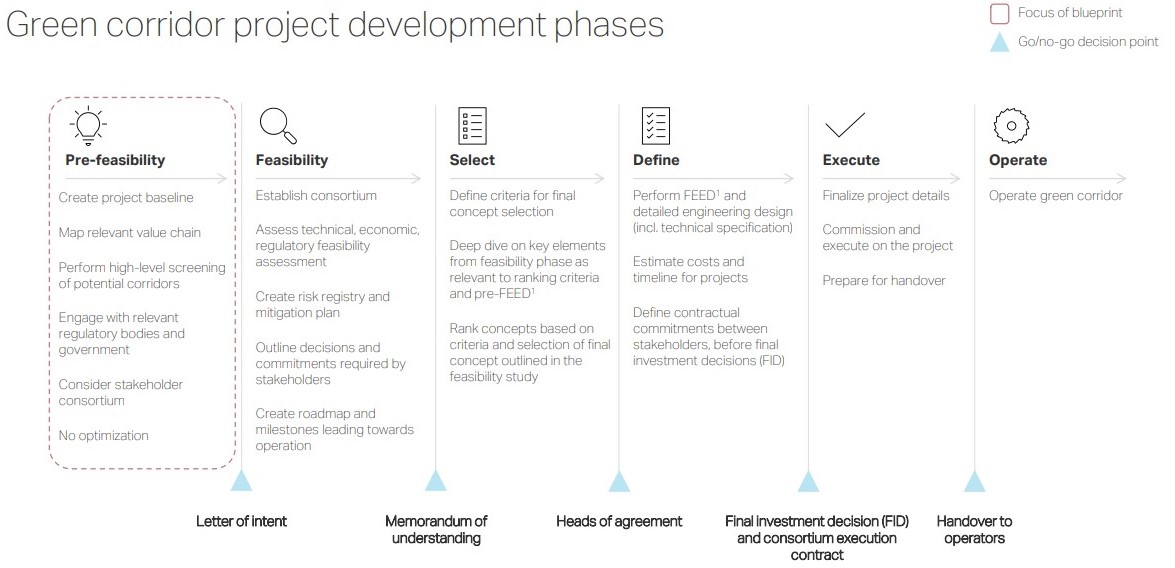To accelerate the generation of green corridors, the Mærsk Mc-Kinney Møller Center for Zero Carbon Shipping is developing a series of blueprints for the different phases of the green corridors projects.
The blueprints are easy to use “how-to” guides that break the project phases into sequential steps. The next blueprint focuses on the pre-feasibility phase green corridor projects and is a guide for understanding early-stage green corridor options in a pre-defined area: port, region, country or sub-continental.
The Green Corridor Pre-Feasibility Blueprint has been developed with RMI – Rocky Mountains Institute under the Green Hydrogen Catapult and builds on real project experience from green corridor projects around the world.
By sharing the processes and learnings, the aim is to inspire more to create green corridors projects around the world.

The full blueprint will launch in December, but a summary of the blueprint analyzes reasons why establishing green shipping corridors is a relevant way to accelerate the decarbonization of shipping:
- Once green corridors are operational, they contribute to the development of alternative fuel supply chain, offtake, and propose/develop measures to overcome cost gaps.
- Green Corridor projects unite first movers across the maritime value chain and consolidate individual first mover actions across sectors. This collaborative nature of green corridor projects help mitigate some of the uncertainties and risks faced by first movers.
- The well-defined geographical scope of green corridor projects reduces complexity and sparks accelerated decarbonization processes.
- Planning, implementing, and operating Green Corridors builds valuable knowhow that can inform and accelerate development of effective regulation.
- Green corridors create a space for pre-competitive testing and commercial trials of technologies and market solutions.
- And furthermore, they can use a ‘ring-fenced’ partnership approach (e.g., consortium) that promotes collaboration across the supply chain, so risks, costs, and benefits are shared across all stakeholders in the private and public sectors.
Pre-feasibility project methodology
The pre-feasibility methodology involves three overall sections: Introduction, data collection, interpretation/discussion.
Activities include preliminary assessment of the main components of possible green corridors in a region or country to outline the most promising and viable corridors.
The process addresses 18 key questions/areas covering the whole value chain: fuel, ports, vessels, cargo and regulatory. The data insight is validated / updated through interviews with key value chain stakeholders.
The outcome of the assessment is to determine whether further investigation and maturation of the outlined green corridor projects is justified (i.e. moving to the feasibility phase).






























































